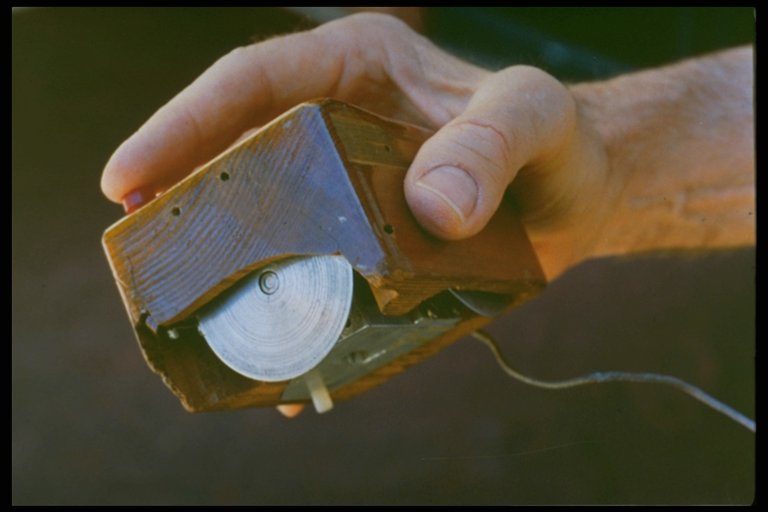 |  | 
|  |  |  |  |
 |  | 
|  |  |  |  |
|
UI Home GUIHome  Mouse
MousePointers Windows Menus Icons GUIDemo |
The mouse consists of a small plastic box resting on a rubber ball that turns two wheels whose axes are at right angles. Each wheel of the mouse is connected to a shaft encoder that delivers an electrical pulse for every incremental rotation of the wheel. As the mouse is rolled around on a flat surface, its movement in two perpendicular directions is translated into rotation of the wheels. These rotations can be measured by counting the pulses received from the shaft encoders. The converted values may be held in registers accessible to the computer or written directly into the computer's memory, the values are normally sampled 30 to 60 times a second by the computer. Push buttons are mounted on top of the mouse where the user can work them with their fingers as they move the mouse. The computer can read the coordinates of the mouse at the time the buttons are depressed.  In addition to its simplicity and low cost, the mouse has the advantage that the user need not pick it up in order to use it. The mouse simply sits on the table surface until they need it. This makes the mouse an efficient device for pointing. The coordinates delivered by the mouse wrap around when overflow occurs, this effect can be filtered out by the software, or it can be retained as a means of moving he cursor rapidly from one side of the screen to the other. Background: The mouse was developed at Stanford Research Laboratory in 1965 as part of the NLS project to be a cheap replacement for light-pens, which had been used at least since 1954. Many of the current uses of the mouse were demonstrated by Doug Engelbart as part of NLS in a movie created in 1968. The mouse was then made famous as a practical input device by Xerox PARC in the 1970's. It first appeared commercially as part of the Xerox Star (1981), the Three Rivers Computer Company's PERQ (1981), the Apple Lisa (1982), and Apple Macintosh (1984). 
|